| Columns Retired Columns & Blogs |
A TWENTY-FOUR year old article is posted here, with some kind of assumption that it will be valued? Jesus god - get a grip.
On the face of it, the MG-20 is not very sensitive, 2.83V raising an estimated 80.5dB at 1m (B-weighted). In practice, however, the speaker's line-source radiation pattern will partially compensate for this. (The level of a true line-source speaker doesn't fall off as quickly with distance as that of a point-source speaker—see later.) As DO said above, the MG-20's impedance is moderately demanding. Fig.1, taken with the passive crossover in-circuit, shows that it drops to just below 4 ohms in the bass and to 3.35 ohms in the high treble. The phase angle, however, is pretty mild.
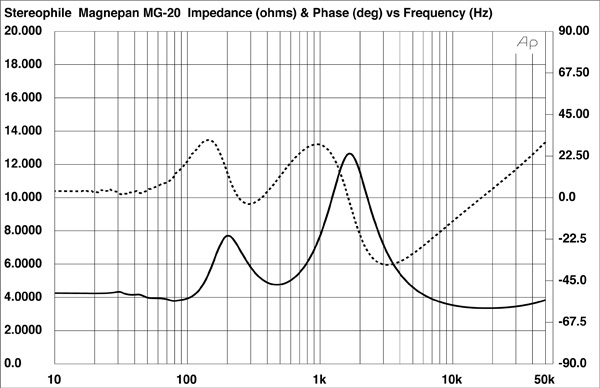
The humps at 200Hz and 1.7kHz in the impedance-magnitude trace are due to the crossover. Fig.2 shows the electrical responses of the external crossover filters: the woofer is rolled off above 100Hz with a third-order slope; the midrange unit has a 6dB slope, realized with a single series capacitor. (The midrange/ribbon crossover is in-circuit at all times; the decision to bi-amp or bi-wire only affects the integration of the woofer and midrange panels.)
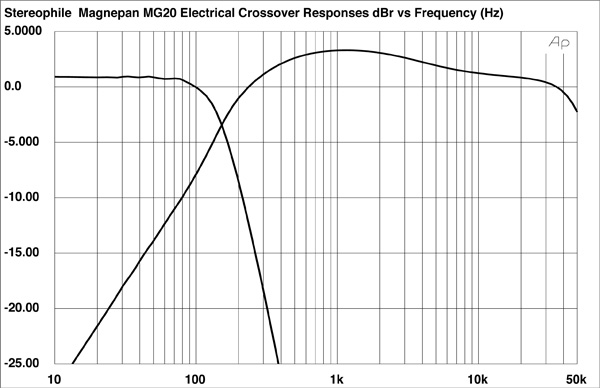
The rather complicated traces in fig.3 show the responses of the three drive-units measured with the DRA Labs MLSSA system and a B&K 4006 microphone calibrated to be flat on-axis. Each trace is a composite of the driver's lower-frequency response, taken in the nearfield with the microphone capsule very close to the geometric center of the drive-unit, and the quasi-anechoic response taken at a distance of 50". Each of the panels has a similar characteristic when measured in this manner: there's a peak at the frequency of the panel's "drumhead" resonance, with a sloped-down response above it. The degree of the slope is partly a function of the distance between the panel and the microphone, because with drive-units this large, the assumption made in measuring the speaker—that the microphone is in the farfield—is no longer valid. The result is a proximity effect that affects the measured response and the tonal balance—again, see later.
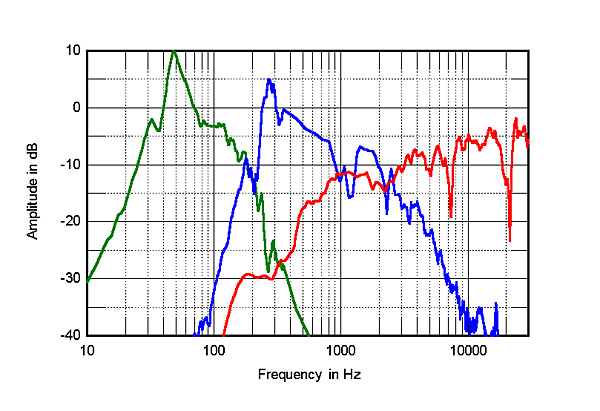
The ribbon's response is smooth in its passband—the notches at 2.4kHz, 7.2kHz, and 21kHz are specific to the microphone position, and are inconsequential. Note, however, the significant overlap between the ribbon and the midrange panels. This will make the MG-20 rather fussy when it comes to choosing the optimal lateral axis.
Fig.4 shows the overall response of the MG-20 on the ribbon axis at a 100" microphone distance, averaged across a 30° horizontal window. (The microphone was 40" from the floor, halfway up the speaker, but about a third of the way up the ribbon, which is mounted on the panel's upper section.) On the left of this graph is shown the complex sum—magnitude and phase—of the nearfield responses of the woofer and midrange panels. The integration between the two looks rather uneven in the graph; it actually sounds much better (measuring big panel speakers is not a task for the timid). The midrange is still rather elevated at the 100" microphone distance, which was the farthest back I could get in the Stereophile listening room. Remember, however, that DO did find this to be a persistent characteristic of the big Magnepan's sound. The mid-treble is also a little depressed—again, as might be expected from DO's auditioning notes.
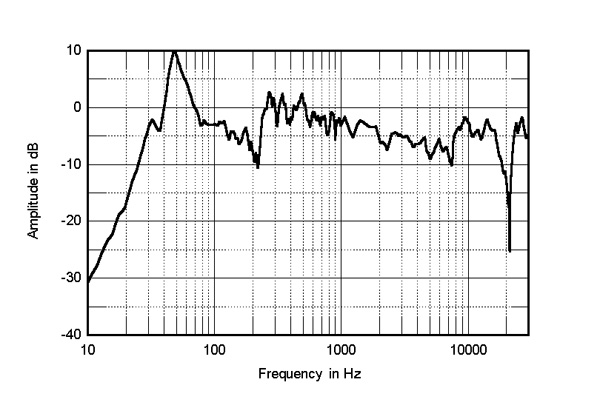
I next examined the proximity effect in my measurements. Fig.5 shows the MG-20's ribbon-axis response at two microphone distances: 50" (top trace) and 100" (bottom). Doubling the microphone distance drops the absolute level by an average of 3–4dB rather than the 6dB typical of a point-source speaker, confirming the MG-20's line-source behavior. More important, although there's slightly less of a midrange prominence to the balance at the greater microphone distance, it's still present. In all but enormous rooms where the listener can sit a long way away, the MG-20 will sound generous in this frequency region.
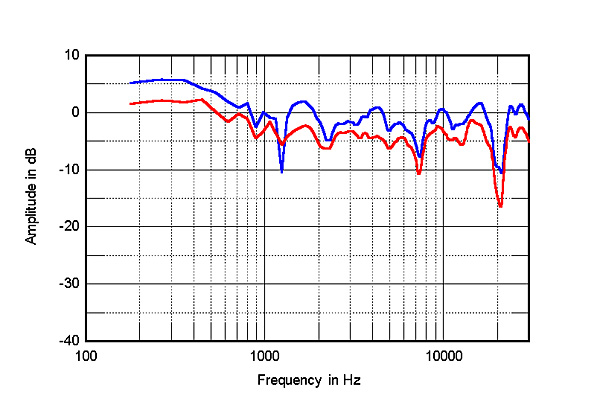
Vertically (not shown), the MG-20's balance changes little with listener height—again, this is a characteristic of line-source behavior. Horizontally, however, things are more difficult, due to the use of three side-by-side drive-units, crossover filters with relatively shallow slopes, and the significant degree of overlap between the ribbon and the midrange panel. Fig.6 shows just the differences in response as the listener moves to the side of the ribbon axis, with the changes off-axis on the tweeter side to the front of the graph. (Ignore the apparent peaks in this graph, which are due to the on-axis notches in fig.4 filling-in to the speaker's sides.) As can be seen, moving just 15° to either side of the tweeter results in a severe suckout in the mid-treble. The greatest lack of energy is on the ribbon side of the panel, which is why DO presumably found it best to have the ribbons on the inside edges of the stereo pair. Doing so will result in the side-wall reflection, which, having the most neutral sound-quality, will have the greatest influence on the speaker's perceived balance.
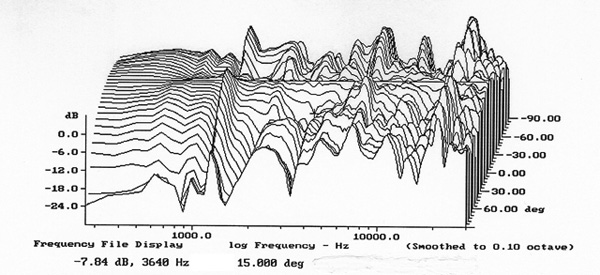
In the time domain, the MG-20's impulse response (fig.7) suggests that the speaker is not time-coherent—a surprising result, given that the drive-units are all in the same plane. The step response (fig.8) confirms this, as the three separate wavefront arrivals from each of the drive-units can be seen in this graph: the positive-going spike closest to the left-hand edge of the graph is the ribbon tweeter's output; the negative-going, slower-risetime pulse just after the 4 millisecond mark is the midrange panel's output; and the large, lazy, negative-going pulse after the 5.5ms mark is the woofer. I checked this by looking at the step response of each drive-unit driven on its own: both panels are connected with negative acoustic polarity, the tweeter with positive.
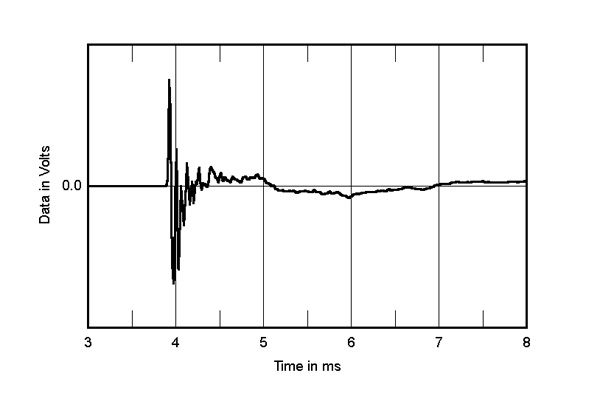
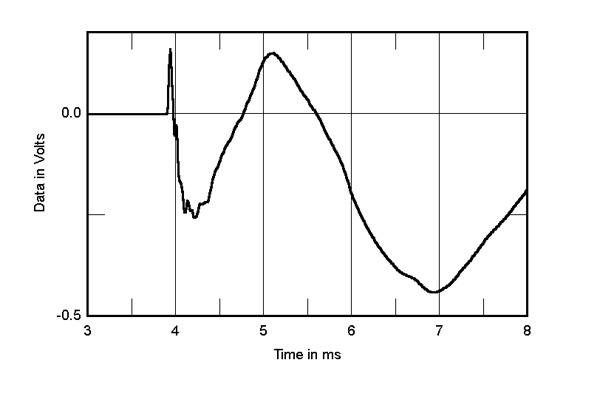
Finally, the cumulative spectral-decay, or waterfall, plot for the MG-20 (fig.9) may look a little hashy in the mid-treble, but is much better than is usually found in planar speakers, which tend to exhibit a trace of chaotic behavior. All in all, my measurements show a good correlation with the Magnepan's perceived balance, but perhaps underemphasize the design's positive attributes. In my own (mono) listening to the sample I measured, I was struck by the smoothness of its rather lower-midrange–dominant tonal balance.—John Atkinson
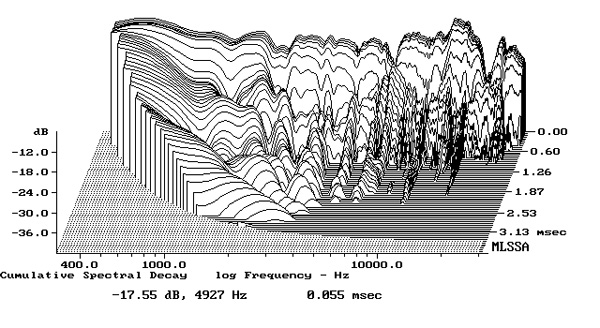

A TWENTY-FOUR year old article is posted here, with some kind of assumption that it will be valued? Jesus god - get a grip.

A TWENTY-FOUR year old article is posted here, with some kind of assumption that it will be valued?
This review is of what was at that time Magnepan's flagship loudspeaker and will be of interest to many. When we launched our website, our plan was to post every review that had been published in Stereophile to our on-line archives and we are well on the way to achieving that goal.
John Atkinson
Technical Editor, Stereophile

The latest version is 20.7 .......May be Stereophile could review them? :-) .........

"Get a Grip" ......... Aerosmith :-) ........

I thank you and/or others responsible for posting this interesting content.
My comment here is intended as counterbalance to complaints about posting older articles.
Respectfully,
JRT

Bravo!!!!!! I enjoy reading blast from the past!!!! Especially the Infinity Composition Prelude PFR and the MTS reviews!!!!

I'm considering buying some of these used. I find your review quite helpful, thank you very much. The fact that yooper doesn't is TMI.

We respect tradition, and history, and our elders.
Plus, whatever you might think, these historic articles are widely and enthusiastically read.
Jim Austin, Editor
Stereophile

Oh please. What a load of BS. Elders? Fuck your pomposity and your lawn.

You cannot make him drink.
I'm thinking our site is a poor match for you. Do you agree?
Jim Austin, Editor
Stereophile

Happily, yes. Carry on with your self-aggrandizing myth-making. You’re grand!

Excellent. I'm glad we agree. Goodbye.
Jim Austin, Editor
Stereophile

Unlike printed magazines where editorial page count is limited by ad revenues, posting old reviews has no effect on the number of posts with new information.
Moreover, in the many years that Stereophile has been posting old material they have typically received more reader comments than new material.
So, your comment was not only of no possible significance, but completely wrongheaded in its premise.

DO's description of 'Planar Imaging', with JA1's comments, are an interesting read :-) .........

The $650 LRS OWNS the older Model 20 in terms of time coherent performance:
https://www.stereophile.com/content/magnepan-lrs-loudspeaker-measurements
The use of a first-order crossover pays off - along with a little care in speaker placement. Now test a newer 3-way Magnepan and see if they can do the same trick with a more complex design.
And thanks for the look back in time!

haha yeah sure, nice all the hype on the LRS. witch still is the normal basic magnepan. foil and conductors in this case being foil. ribbon speaker is a missleading name. And im pretty sure the 20.7 would rock the world of an LRS , as it should. far more surface area true ribbon not a normal planar, and push pull mid... what else do you want to improve over the LRS? the first order filter? yes i personally go for first order on my planars if i can. but time aligned ? NO. the tweeter and the mid/bass use the same foil and are toed in, besides that the midrange/bass is rather big so perfect time alignment is not doable. not that it matters much either. since the frequencies they are crossed are lower then usual, then with a dome tweeter. as for the 20.7 that would even improve since its a 3 way.

Back in 1989 I auditioned what I thought was going to be my final turntable purchase, it was between the Linn LP-12 and Roksan Xerxes. The speakers used were the large Maggies, I believe they may have been the 20's or at the very least the precursors to the 20's reviewed above. The speakers and Bryston electronics were revealing enough to let me make my decision. I can still remember the addictive sound they had and if I had space in my Manhattan apt I would have swapped my Kans for a pair of Maggies. Love that Stereophile releases these old reviews. Takes me back to a time when physical media was king and when retail hi-fi stores were more plentiful.

yooperaudio's comments certainly mirror the unnecessary nastiness I see in so much social interaction these days. Dick Olsher has long been amongst my two or three favorite hi-fi critics of all time, and much of what he had to say about the MG20 is timeless, and still relevant today. I happen to own a pair of Tympani T-IVa, which can be viewed as the basic blueprint for the current Maggie flagship, the MG30.7. Thanks for the reprint, though I still have my copy of the issue it appeared in. A Stereophile subscriber since 1972!

another interesting read would be a review of the original Acoustat monitor, the one that resembled the black monolith in "2001". My friend had a pair of these and they sounded amazing.

The Acoustat model that most closely resembled the 2001 monolith was the 2+2 which arrived five years after the first Acoustat. Ironically, they bore a far greater resemblance to that monolith than the first Martin Logan speaker, the Monolith.
https://www.stereophile.com/content/acoustat-22-loudspeaker